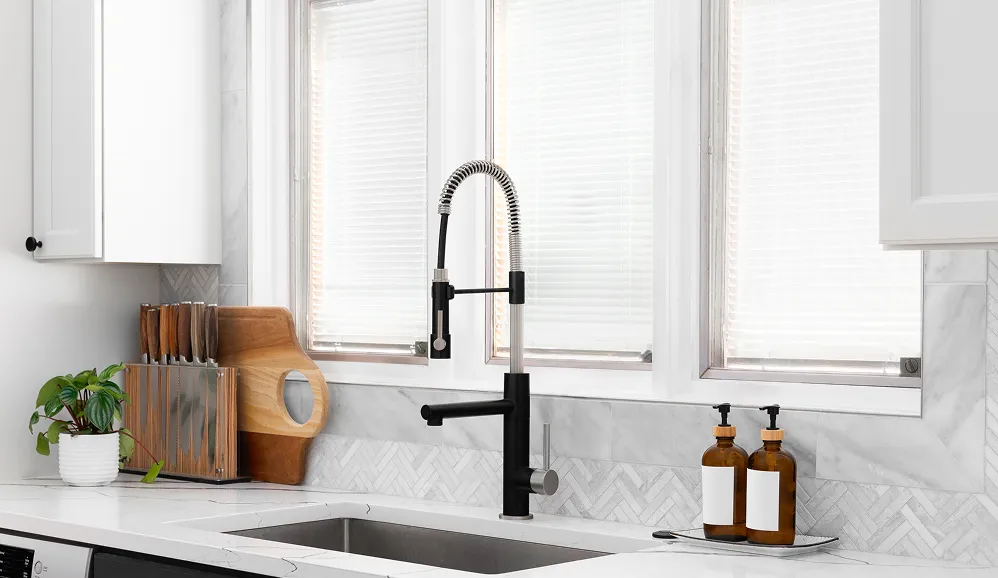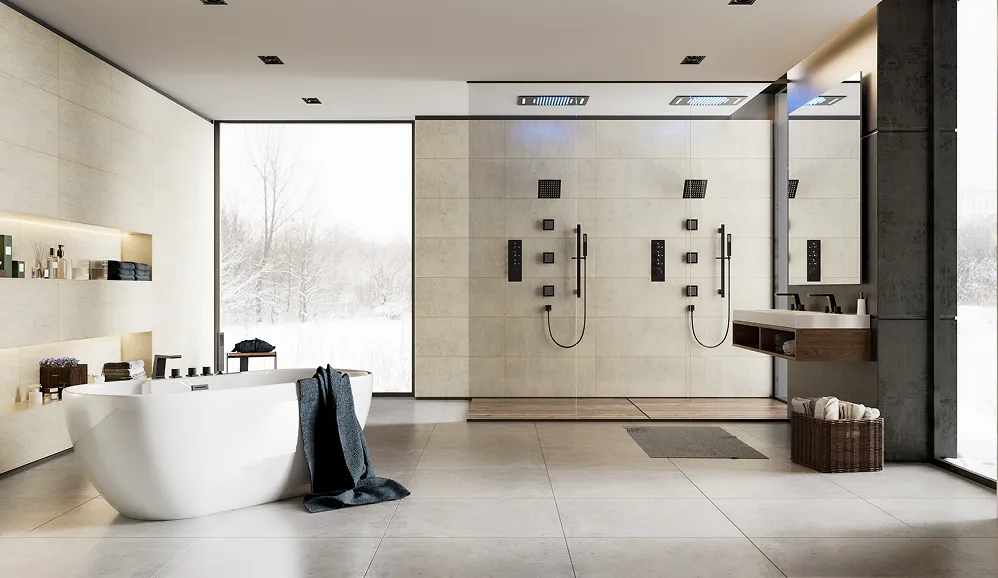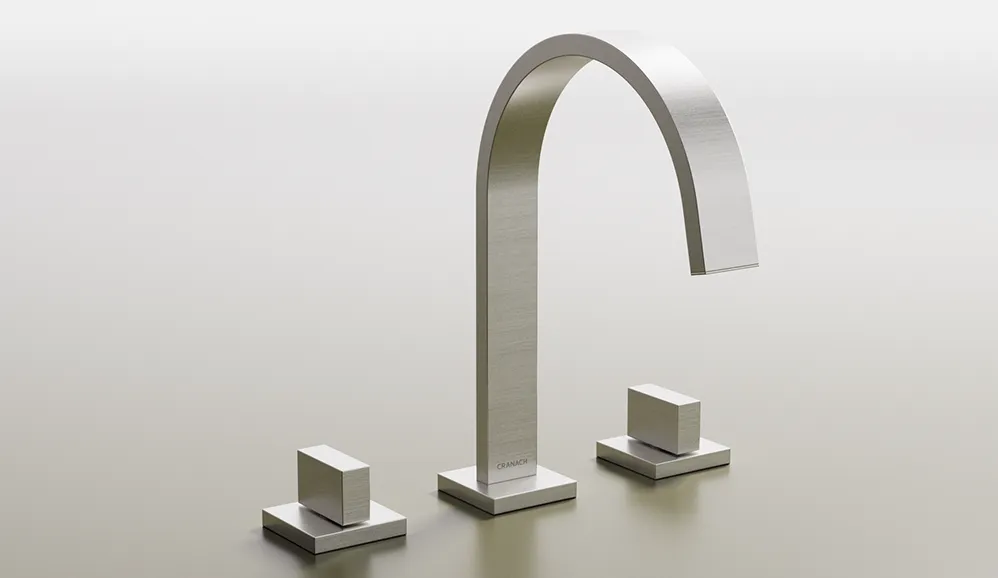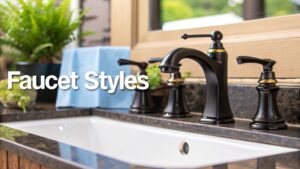Level Up Your Faucet Installation Game
Installing a new faucet can be a breeze with the right tools. This list covers seven essential tools for a smooth, leak-free faucet installation, whether you’re a DIY enthusiast or a seasoned pro. Learn what tools you need to prevent common installation problems and ensure a professional finish. We’ll also highlight how Cranach bath and kitchen faucets are designed for easy installation with these essential tools.
1. Basin Wrench
The bane of many a DIY plumber’s existence is the cramped, awkward space behind a sink. Trying to tighten or loosen faucet nuts in this confined area with conventional wrenches can be an exercise in frustration, often leading to scraped knuckles and damaged fixtures. This is where the basin wrench steps in as an indispensable tool. Its unique design allows you to easily reach and manipulate those hard-to-access nuts, making faucet installation and removal a significantly less painful process. The basin wrench’s specialized purpose and effectiveness in this specific area make it a crucial addition to any plumbing toolkit.
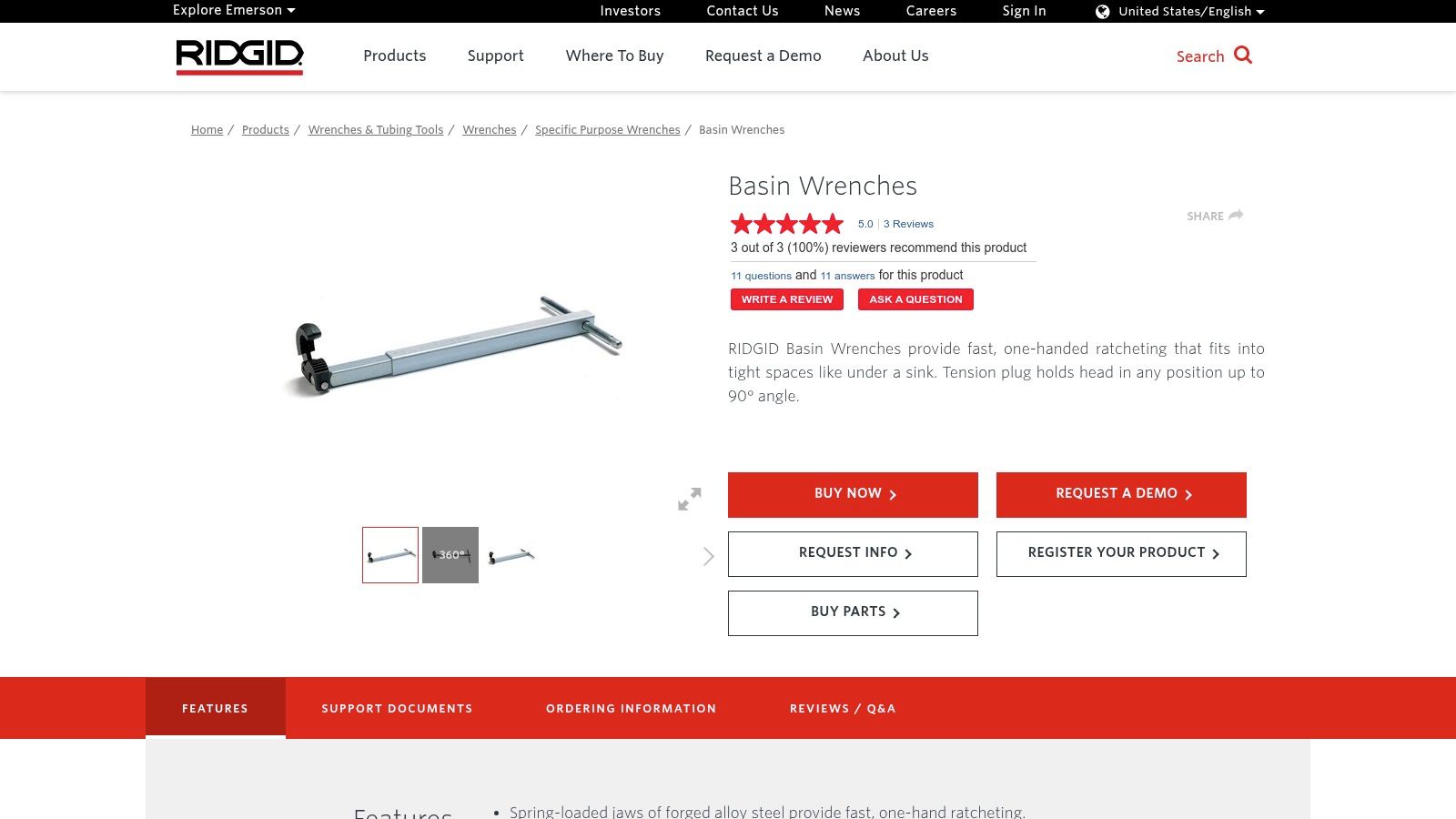
A basin wrench features a long shaft, typically telescoping, with a spring-loaded jaw at the end. This jaw pivots and rotates, allowing you to grip the mounting nuts from various angles, even when working blind. The telescoping handle, often extending from 10″ to 17″ as seen in many models, provides the necessary reach deep under sinks. Most basin wrenches are compatible with standard faucet mounting nuts ranging from 1/2″ to 1-1/2″, covering the vast majority of residential installations. The reversible head design allows for both tightening and loosening actions, simplifying both installation and removal tasks. Features like a cushioned grip further enhance user comfort during operation. For more technical specifications, you might find additional information if you learn more about Basin Wrench.
Compared to using adjustable pliers or other makeshift solutions, a basin wrench offers far superior control and leverage, minimizing the risk of damaging the faucet or surrounding plumbing. While channel-type pliers can sometimes be employed in similar situations, they lack the specific angled grip and rotating head of a basin wrench, making them less effective and potentially more damaging.
Pros:
- Essential for accessing mounting nuts in tight spaces behind basins and sinks.
- Significantly reduces installation and removal time compared to alternative methods.
- Helps prevent damage to fixtures and plumbing.
- Affordable, with most models priced between $15 and $30.
Cons:
- Specialized tool with limited applications outside of plumbing.
- Can have a slight learning curve for first-time users, requiring some practice to master the pivoting jaw mechanism.
- Durability can be an issue with lower-quality models.
Implementation Tip: Before using a basin wrench, ensure the jaw is properly aligned with the nut and the handle is securely extended. Practice the pivoting and rotating action in a more accessible area before tackling the tight space under the sink. This will help you get a feel for the tool and prevent accidental slippage. For professional-grade options, you can explore the range available on the RIDGID website.
2. Silicone Caulk and Caulk Gun
A perfect faucet installation isn’t just about the plumbing; it’s about ensuring a watertight seal that stands the test of time. This is where silicone caulk and a caulk gun become indispensable. Silicone caulk provides a waterproof barrier between the faucet and the sink or countertop, preventing leaks and subsequent water damage. A caulk gun, on the other hand, ensures the precise application of the caulk, leading to a professional-looking finish and a robust seal. This combination is crucial for any faucet installation, whether you’re a seasoned plumber or a homeowner tackling a DIY project.
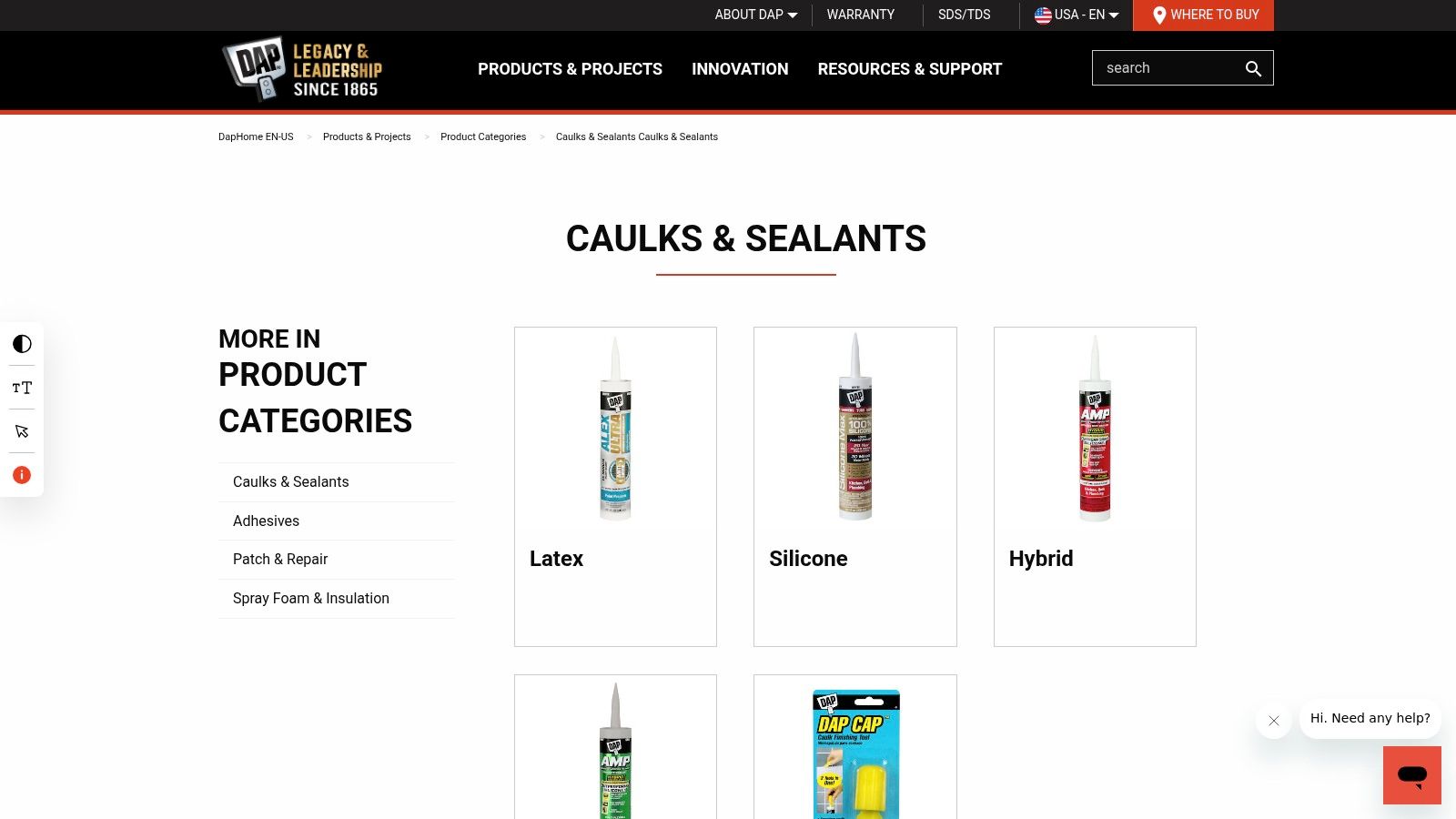
For contractors, builders, and plumbers, using professional-grade silicone caulk and a robust caulk gun is paramount for ensuring client satisfaction and preventing costly callbacks due to leaks. Features like an 18:1 thrust ratio for smooth dispensing and a rotating barrel for maneuvering in tight spaces are invaluable for achieving a clean and efficient application. Interior designers will appreciate the ability of silicone caulk to create a seamless and aesthetically pleasing finish, enhancing the overall look of the kitchen or bathroom. Even for homeowners, a good quality caulk gun, often available with caulk for under $30, makes a significant difference in achieving a professional-looking result. You can Learn more about Silicone Caulk and Caulk Gun to explore different options available in the market. Check out resources like DAP (https://www.dap.com/products-projects/product-categories/caulks-sealants/) for a wide selection of caulks and sealants.
While other sealants exist, silicone caulk stands out due to its mold and mildew resistance, making it ideal for wet environments like kitchens and bathrooms. Furthermore, its flexibility allows for slight movements of the faucet without compromising the seal’s integrity.
Implementation Tips:
- Surface Preparation: Clean and dry the area thoroughly before applying caulk. This ensures proper adhesion.
- Cutting the Nozzle: Cut the nozzle of the caulk tube at a 45-degree angle, creating an opening appropriate for the bead size you need. Quality caulk guns often have a built-in cutter for this purpose.
- Applying Even Pressure: Maintain consistent pressure on the caulk gun trigger while moving along the seam.
- Smoothing the Bead: Use a wet finger or a caulk smoothing tool to create a smooth, concave finish. This not only looks professional but also helps prevent water from pooling.
- Cleanup: Wipe away excess caulk immediately with a damp cloth.
Pros:
- Creates watertight seals, preventing leaks and water damage.
- Mold and mildew resistant, suitable for kitchens and bathrooms.
- Professional-looking finish.
- Affordable (complete setup available for under $30).
Cons:
- Requires practice for smooth and even application.
- Can be messy for beginners.
- Cheaper caulk guns may drip or apply unevenly.
3. Adjustable Plumber’s Wrench Set
An adjustable plumber’s wrench set is a cornerstone of any plumbing toolkit, proving invaluable during faucet installations. This set typically includes pipe wrenches and adjustable wrenches in a variety of sizes, essential for connecting supply lines, tightening various fittings, and ensuring a leak-free seal. These heavy-duty wrenches boast adjustable jaws capable of gripping pipes, nuts, and fittings of varying diameters. Investing in a quality set often means wrenches equipped with non-marring jaw covers, crucial for protecting the finish of your chrome fixtures. This versatility makes them applicable throughout the entire installation process, from removing the old faucet to securing the new one.
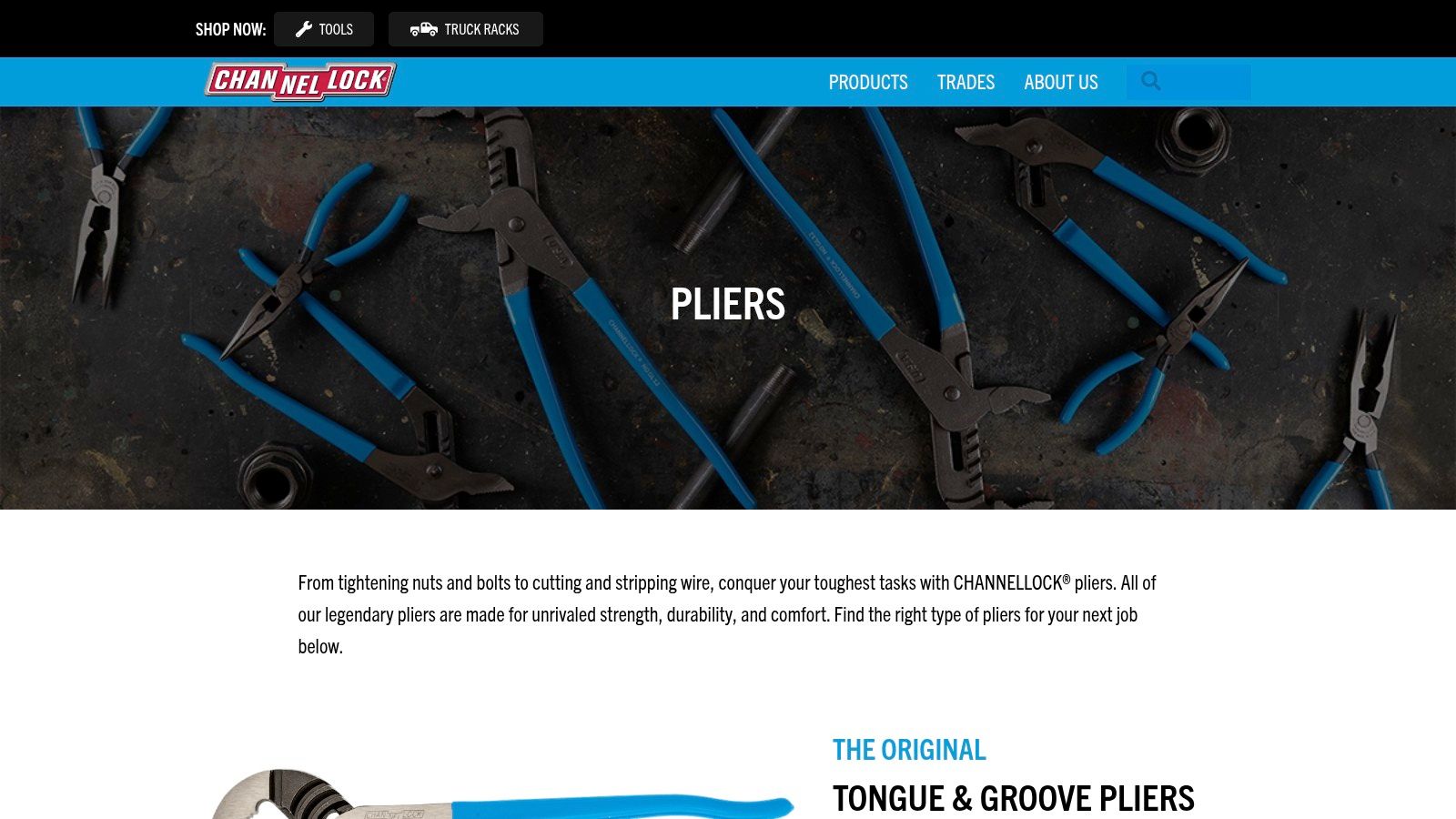
A typical set includes 8″, 10″, and 12″ adjustable wrenches, offering flexibility for different connection types and access points. Look for sets with smooth adjustment mechanisms, enabling precise sizing for a secure grip. Comfort-grip handles are also a must-have, particularly for extended projects, reducing hand fatigue and improving control. The hardened steel construction of these wrenches ensures durability and a long lifespan, making them a worthwhile investment for any homeowner, contractor, or plumber. Some premium sets include those non-marring jaw covers we mentioned, essential for working with finished fixtures and preventing unsightly scratches on your new faucet. This is especially valuable for interior design-focused projects where aesthetics are paramount.
While specialized faucet wrenches might offer a more tailored approach for certain tasks, the adjustable wrench’s versatility makes it indispensable for a wider range of plumbing and general household tasks. They allow for the proper application of torque when tightening fittings, a critical factor in preventing leaks and ensuring a lasting, watertight seal. This makes them an essential tool for anyone from a seasoned plumber to a homeowner tackling a DIY project. You can find more specific information on adjustable wrenches if you Learn more about Adjustable Plumber’s Wrench Set.
A quality adjustable plumber’s wrench set can range from $50 to $100, representing a long-term investment applicable to multiple projects. Channellock (check out their offerings at https://www.channellock.com/product-category/pliers/) is a reputable brand known for its quality and durability. However, keep in mind that these sets can be heavier and bulkier than specialized faucet tools. They also require proper technique to avoid damaging fixtures. Over-tightening or improper positioning can lead to scratches, especially on delicate finishes. Always ensure the jaws are correctly sized and positioned on the fitting before applying pressure. For particularly delicate finishes, consider using a protective cloth between the wrench and the fixture.
Pros:
- Versatile tools useful for numerous plumbing and household tasks
- Allows proper torque application when tightening fittings to prevent leaks
- Long-term investment that works for multiple projects
- Different sizes accommodate various connection types
Cons:
- Quality sets can be expensive ($50-$100)
- Heavier and bulkier than specialized faucet tools
- Can damage fixtures if used without proper technique
4. Faucet and Sink Installer Tool
Wrestling with cramped spaces and awkward angles under a sink while trying to tighten a faucet nut is a plumber’s (and DIYer’s) nightmare. The Faucet and Sink Installer Tool aims to banish this frustration, making it a worthy addition to any faucet installation toolkit. This multi-function tool consolidates the functionality of several individual tools into one compact design, specifically engineered for the challenges of faucet and sink installations. It’s essentially a Swiss Army knife for your under-sink adventures.
This tool typically features a long, typically 11″-14″, extension rod capped with various interchangeable socket heads. These sockets are designed to fit the mounting nuts of most major faucet brands, including Moen, Delta, and Kohler. The extra-long handle provides the leverage and reach needed to tighten those hard-to-reach nuts securing the faucet to the sink or countertop, eliminating the need for contorting your body into uncomfortable positions. Some models also include a dual-ended design, offering different attachments for various stages of the installation process, such as connecting supply lines or tightening the drain assembly. The lightweight aluminum construction ensures the tool is easy to maneuver even in confined spaces.
Practical Applications and Use Cases:
- Faucet Installation: The primary purpose of this tool is to simplify faucet installation by providing easy access to the mounting nuts.
- Sink Installation: Certain models can also assist with sink installation, particularly drop-in sinks.
- Maintenance and Repairs: The tool can be useful for tightening loose connections under the sink or removing old faucets.
Pricing and Technical Requirements:
The Faucet and Sink Installer Tool is generally affordable, ranging from $15 to $30, offering excellent value compared to purchasing multiple individual tools. There are no specific technical requirements for using the tool, although familiarity with basic plumbing principles is recommended.
Comparison with Similar Tools:
Traditional basin wrenches and adjustable pliers can be used for faucet installation, but they often lack the reach and specialized grip of the Faucet and Sink Installer Tool. While a basin wrench can offer some leverage, it can be difficult to maneuver in tight spaces. Similarly, adjustable pliers may not provide a secure enough grip on the nut, potentially leading to slippage and damage. This dedicated tool addresses these shortcomings by providing a secure grip and extended reach.
Implementation/Setup Tips:
- Choose the right socket size: Ensure the selected socket fits snugly on the faucet nut to avoid stripping or damaging the nut.
- Use gentle pressure: Apply firm but gentle pressure when tightening the nuts to avoid over-tightening and potential damage.
- Check for compatibility: While most tools are designed for major brands, verify compatibility with your specific faucet model. Learn more about Faucet and Sink Installer Tool for additional information on compatibility and usage.
Pros:
- All-in-one solution replacing multiple tools.
- Designed specifically for the awkward angles of faucet installation.
- Time-saving for both DIYers and professionals.
- Affordable.
Cons:
- Less versatile for general plumbing work compared to traditional tools.
- May not fit all faucet models perfectly.
- Some versions have durability issues with plastic components.
Website:
A popular example of this tool is the RIDGID Faucet and Sink Installer Tool.
The Faucet and Sink Installer Tool is a valuable addition to any plumbing toolkit, offering a convenient and efficient solution for tackling the challenges of faucet and sink installations. It’s a worthwhile investment for both homeowners and professionals seeking to simplify this common plumbing task.
5. Plumber’s Putty
Plumber’s putty is a crucial tool for creating reliable seals in various plumbing fixtures, especially around sink drains and some faucet bases. This malleable, oil-based compound provides a watertight barrier, preventing leaks and ensuring the longevity of your plumbing system. While silicone sealant is a modern alternative, plumber’s putty remains a popular choice for its specific benefits, particularly its easy removal and reusability. This makes it ideal for homeowners and professionals alike.
This pliable material is primarily used to create a seal between the sink drain flange and the sink’s surface. When you install a new sink or faucet, the drain flange needs to be sealed tightly to prevent water from seeping underneath. Plumber’s putty is perfectly suited for this task. It also finds application in sealing the base of certain faucets to the countertop, though silicone is often preferred in these cases due to its superior durability and resistance to certain cleaning products.
Practical Applications & Use Cases:
- Sink Drain Installation: The most common use for plumber’s putty is sealing the underside of the sink drain flange. This prevents water from leaking between the flange and the sink.
- Faucet Base Sealing (select applications): While silicone is generally preferred, some faucet installations may still use plumber’s putty to seal the base of the faucet to the countertop.
- Repairs & Fixture Replacements: The non-hardening nature of plumber’s putty makes it incredibly useful for repairs. Fixtures sealed with putty can be easily disassembled without damaging the surrounding surfaces, unlike fixtures sealed with adhesive sealants.
Features & Benefits:
- Non-Hardening Formula: Remains soft and pliable, allowing for future disassembly and fixture adjustments. This contrasts with silicone, which cures to a hard, inflexible seal.
- Watertight Seal: Creates a reliable barrier against water leaks, protecting cabinets and flooring from water damage.
- Easy Application: Simply roll the putty into a rope and press it into place. No special tools are required.
- Cost-Effective: Plumber’s putty is an inexpensive solution, usually costing between $5 and $10 per container.
Pros & Cons:
Pros:
- Inexpensive
- Easy to use
- Allows for disassembly and reuse of fixtures
- No curing time required
Cons:
- Not suitable for porous materials like granite (can stain)
- Less durable than silicone in some applications
- Oil can separate from putty if stored improperly (keep the container sealed tightly)
Implementation Tips:
- Clean the surface: Before applying plumber’s putty, thoroughly clean the area to ensure proper adhesion.
- Roll the putty: Roll the putty into a 1/4″ to 1/2″ rope.
- Apply to the underside of the flange: Press the rope of putty firmly onto the underside of the sink flange, creating a continuous seal.
- Install the flange: Insert the flange into the sink drain opening and tighten. Excess putty will squeeze out and should be removed with a damp cloth.
- Learn more about Plumber’s Putty and its various applications for a deeper understanding of this essential plumbing material.
Comparison with Silicone:
While silicone is becoming increasingly popular, plumber’s putty still holds its own for certain applications. Silicone offers greater durability and resistance to mildew and staining, making it suitable for a wider range of materials. However, the removability and reusability of plumber’s putty make it the preferred choice when you anticipate needing to access the plumbing fixtures again in the future.
Why Plumber’s Putty Deserves its Place in the List:
Plumber’s putty’s unique properties, ease of use, and cost-effectiveness make it an invaluable tool for DIYers and professionals. While silicone offers a more permanent and potentially more durable solution, plumber’s putty fills a specific need for projects where easy disassembly and fixture reuse are priorities. Its proven track record and simplicity contribute significantly to its enduring popularity in the plumbing world.
6. Teflon Tape/Thread Seal Tape
Teflon tape, also known as thread seal tape or PTFE tape, is a crucial tool for any faucet installation project, ensuring leak-free connections and earning its spot on this list. This inexpensive material creates a reliable seal between threaded pipe joints, preventing drips and water damage. It works by filling the microscopic gaps between male threads, creating a watertight barrier when the fitting is tightened.
Practical Applications and Use Cases:
Teflon tape is used on virtually all threaded faucet connections, including:
- Supply lines: Connecting the faucet to the hot and cold water supply shut-off valves.
- Faucet body components: Sealing connections within the faucet assembly itself.
- Drain connections: Sealing the threads on the tailpiece and other drain components.
Pricing and Technical Requirements:
A standard roll of Teflon tape costs between $1 and $3, making it an extremely cost-effective solution for leak prevention. Look for standard density PTFE tape, which is suitable for water applications. Higher density tapes are available for gas lines, but are generally not necessary for faucet installations. The tape is temperature resistant from a staggering -450°F to 500°F, far exceeding the temperature range encountered in residential plumbing. It is also chemically inert, meaning it won’t react with water or other substances commonly found in plumbing systems.
Implementation/Setup Tips:
- Clean the threads: Ensure the male threads are clean and free of debris before applying the tape.
- Wrap in the correct direction: Wrap the tape clockwise around the male threads, starting at the end closest to the fitting. This ensures that the tape doesn’t unravel when tightening the connection. Wrapping against the direction of the threads can cause the tape to bunch up and fail to seal properly.
- Overlap layers: Use 2-3 overlapping layers of tape, ensuring complete coverage of the threads. For worn or damaged threads, you may need to apply more layers. However, be cautious as excessive tape can lead to overtightening and potentially damage the fitting.
- Smooth the tape: After applying the tape, smooth it down onto the threads with your fingers to ensure a snug fit.
- Tighten the connection: Tighten the fitting by hand, then use a wrench to complete the connection. Avoid overtightening, which can damage the threads or the fitting.
Comparison with Similar Tools:
While pipe dope (a thread sealant paste) can also be used to seal threaded connections, Teflon tape is generally preferred for faucet installations due to its ease of use and clean application. Pipe dope can be messy and, if used incorrectly, can clog aerators or contaminate water systems.
Features and Benefits:
- Creates a watertight seal: PTFE material effectively seals threads, preventing leaks.
- Prevents thread seizure: The tape lubricates the threads, making assembly and future disassembly easier.
- Won’t harden: Unlike some pipe sealants, Teflon tape remains flexible, allowing for future adjustments.
- Easy to apply: Simple application process requires minimal training.
- Cost-effective: A single roll is inexpensive and can be used for multiple projects.
Pros:
- Extremely cost-effective
- Easy to apply
- Creates reliable seals
- Won’t contaminate water systems or clog aerators
Cons:
- Can be applied incorrectly (wrong direction) by beginners
- Not suitable for some connection types (e.g., flared fittings)
- Multiple layers needed for worn threads, which can cause overtightening
Website: Oatey Teflon Tape
7. Faucet Supply Line Wrench
The bane of many a faucet installation is the cramped space under the sink. Wrestling with a bulky wrench to tighten supply lines is a recipe for scraped knuckles and stripped nuts. Enter the faucet supply line wrench, a small but mighty tool designed specifically to conquer this challenge. This specialized wrench earns its spot on this list by making quick work of supply line connections, preventing damage, and ultimately saving you time and frustration.
This low-profile tool boasts a compact design and uniquely configured jaws, allowing it to easily access and grip supply line nuts in even the tightest under-sink spaces. Forget contorting your hand and arm into impossible positions; the faucet supply line wrench provides the leverage and control you need without requiring much maneuvering room. The open-end jaw design is typically angled and sized to securely grip the hex nuts on supply lines without marring the chrome or other finishes.
Features and Benefits:
- Compact Design: Specifically engineered for tight under-sink spaces.
- Specialized Jaws: Open-end jaws are configured for a secure, non-slip grip on supply line nuts.
- Non-Marring: Protects the finish of your supply lines and faucet connections.
- Adjustable Options: Some models offer adjustable jaws to accommodate different nut sizes.
- Cushioned Handles: Many wrenches feature comfortable, cushioned handles for added grip and reduced hand fatigue.
Practical Applications:
The faucet supply line wrench is essential for anyone installing or replacing a faucet. Whether you’re a seasoned plumber, a DIY homeowner, or a contractor working on a remodel, this tool will simplify the process of connecting the water supply lines to the faucet tailpieces. It’s particularly valuable when working with difficult-to-reach connections, such as those found in pedestal sinks or vanities with limited access.
Comparison with Similar Tools:
While adjustable crescent wrenches or pliers might seem like viable alternatives, they often lack the precise fit and grip of a dedicated supply line wrench. Using the wrong tool increases the risk of rounding off the nut, damaging the supply line, or scratching the finish. The faucet supply line wrench eliminates these risks.
Implementation/Setup Tips:
- Choose an adjustable wrench if you anticipate needing to work with various supply line sizes.
- Ensure the jaws of the wrench are securely fitted onto the nut before applying pressure.
- Turn the wrench clockwise to tighten and counter-clockwise to loosen. Avoid overtightening, which can damage the connection.
Pros:
- Prevents damage to supply lines.
- Significantly easier to use in tight spaces than conventional wrenches.
- Reduces installation time.
- Moderately priced ($10-$20).
Cons:
- Limited use beyond supply line connections.
- Not always included in basic plumbing tool sets.
- Some models have limited adjustment ranges.
Investing in a faucet supply line wrench is a small price to pay for the convenience and peace of mind it offers during faucet installations. It’s a worthwhile addition to any plumbing toolkit, ensuring efficient and damage-free connections every time.
Ready to Install Your Dream Faucet?
With the right tools, faucet installation can be a smooth and successful DIY project. From the basin wrench for tight spaces under the sink to the plumber’s putty and Teflon tape for creating leak-proof seals, each tool plays a crucial role. Remember that choosing the correct size and type of wrench, like adjustable wrenches or a dedicated faucet supply line wrench, is essential for preventing damage to your new faucet and existing plumbing. Proper application of sealant, using a caulk gun for silicone or carefully applying plumber’s putty, is equally important for long-term performance. Investing in quality tools not only simplifies the process but also contributes to a professional, leak-free finish.
By having these seven essential tools at your disposal—basin wrench, silicone caulk and caulk gun, adjustable plumber’s wrench set, faucet and sink installer tool, plumber’s putty, Teflon tape, and faucet supply line wrench—you’re well-prepared to tackle any faucet installation challenge. Remember to consider your specific project needs and budget when selecting tools.
Now that you’re equipped with the knowledge and the right tools, elevate your renovation with a Cranach bath and kitchen faucet. Designed for both style and ease of installation, Cranach faucets seamlessly integrate with your newly acquired skills and tools. Explore our collection of innovative and elegant faucets at Cranach bath and kitchen and discover the perfect finishing touch for your project.


